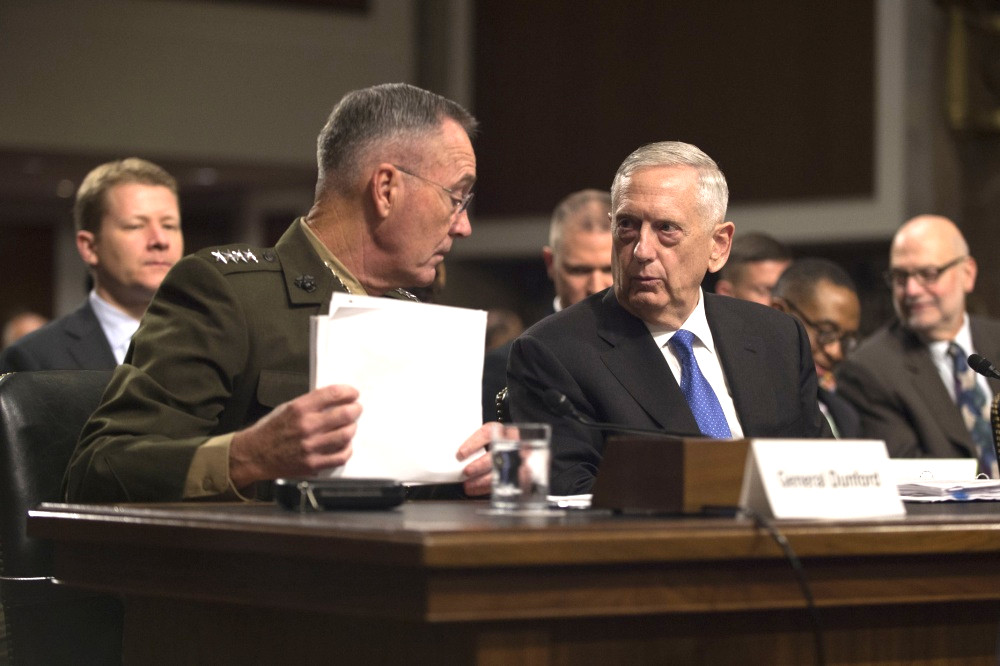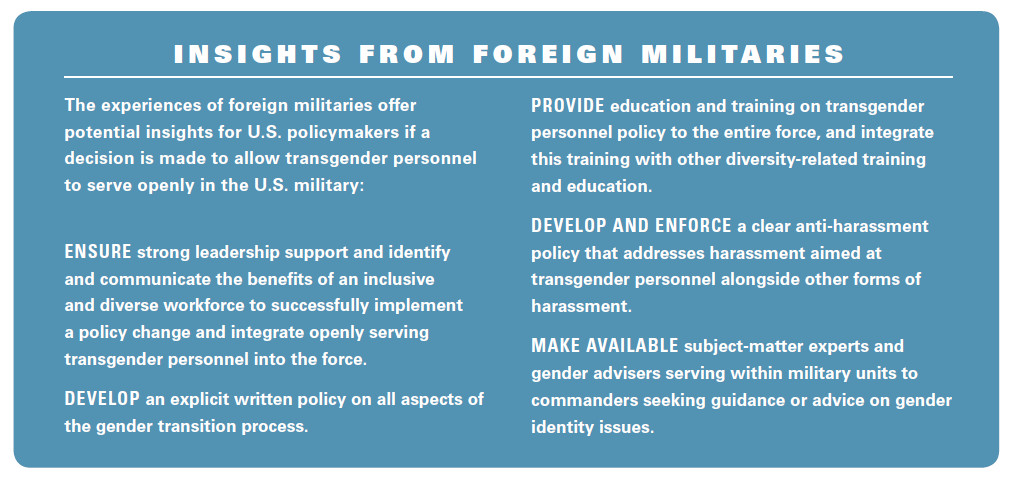President Donald Trump has appeared to suggest he will ban transgender individuals from openly serving in the U.S. military. The announcement comes amid a Pentagon review and ongoing Congressional and public debates surrounding the issue.
On July 26, 2017, Trump took to Twitter to say he would not “accept or allow” transgender persons “in any capacity” in the American armed forces. He specifically cited high medical costs and unspecified “disruption” as the key factors in his decision, which he said came after discussing the issue with unnamed “Generals and military experts.”
Here is the full text of the three Tweets combined into a single statement:
“After consultation with my Generals and military experts, please be advised that the United States Government will not accept or allow Transgender individuals to serve in any capacity in the U.S. Military. Our military must be focused on decisive and overwhelming victory and cannot be burdened with the tremendous medical costs and disruption that transgender in the military would entail. Thank you.”
During his election campaign, Trump insisted he would be an ally for the LGBTQ community, notably winning the support of prominent, if controversial transgender celebrity Caitlyn Jenner, at least initially. Though his administration ultimately moved to remove Obama-era protections, he come out in favor of letting transgender person use the bathroom of their choice, another hot button political issue, during his campaign. In regards to the new military restrictions, He did not link to a more detailed description of any actual military policy or an explanation of how it might be implemented and impact transgender individuals serving already.
Estimates vary considerably – from approximately 1,300
to 15,000 – on how many trans personnel the U.S. military has at present among its uniformed service members and civilian employees, but this figure appears to be likely in the thousands. At least one of these individuals serves in the Naval Special Warfare community, according to separate recent reports regarding women joining U.S. special operations units.
At the time of writing, neither the White House, nor the Pentagon websites had any statements on the issue or notices about policy changes. Trump could put forward the new policy in a presidential policy directive or executive order or push for new legislation in Congress. Senator John McCain, who serves as the Chair of the Senate Armed Services Committee, was among a number of
members of congress, both Republicans and Democrats, to immediately criticize the potential decision, as well as the choice to announce it via social media.
“The President’s tweet this morning regarding transgender Americans in the military is yet another example of why major policy announcements should not be made via Twitter,” the Arizona Republican wrote in a statement. “There is no reason to force service members who are able to fight, train, and deploy to leave the military – regardless of their gender identity. We should all be guided by the principle that any American who wants to serve our country and is able to meet the standards should have the opportunity to do so – and should be treated as the patriots they are.”
The issue had already become a heated debate, however. In 2016, President Barack Obama’s administration announced plans to ultimately begin recruiting openly transgender individuals into the U.S. armed forces, a policy that his Secretary of Defense Ashton Carter had initially outlined. Those plans are already on hold until Jan. 1, 2018. Secretary of Defense James Mattis made that decision on June 30, 2017, ahead of the original deadline to begin accessing openly trans persons for military service on July 1.
“Since becoming the Secretary of Defense, I have emphasized that the Department of Defense must measure each policy decision against one critical standard: will the decision affect the readiness and lethality of our armed forces?” Mattis wrote in a memo for all the service secretaries and the Chairman of the Joint Chiefs of Staff. “Put another way, how will the decision affect the ability of America’s military forces to defend the nation?”
However, Mattis made clear that his decision would not “presuppose” or otherwise prejudice the outcome of his additional review. We don’t know if any findings from this ongoing process impacted Trump’s apparent policy decision.
Mattis’ memo also stressed the delay on new recruits wouldn’t have any impact on the existing policies regarding transgender individuals already serving in the U.S. military. On June 19, 2017, U.S. Marine Corps General Joseph Dunford, Chairman of the Joint Chiefs of Staff, publicly concurred with this position, stating that he had no objection to trans persons presently on duty continuing to serve.

Trump’s announcement, which alluded to potentially exorbitant costs associated with providing medical care to individuals seeking or in the process of transitioning genders, did come after the House of Representatives decided not to block federal funding for reassignment surgeries or hormone therapy earlier in July. The lawmakers voted to strip the provision from a draft of the defense spending bill for the 2018 fiscal year.
Secretary Mattis personally called the provision’s author, Vicky Hartzler, to ask her to withdraw it, according to CNN. In June 2017, the Missouri Republican had attempted to insert more hard line language into the bill, which would have outright ended the Obama-era plans to begin recruiting transgender persons into the U.S. military. She decided to retract that original legislation and wait for the results of the official Pentagon review. The particular issue of tax dollars going to transgender transitions had become something of a lightning rod after reports that Chelsea Manning, a former member of the U.S. Army the service had convicted of leaking secret information to Wikileaks, would receive such benefits.
At present, there is no conclusive evidence to support or contradict the claims that transgender individuals would overly burden the U.S. military’s healthcare system, negatively impact “unit cohesion,” or otherwise limit forces’ ability to fight and win. Critics have made many of these same arguments in the past against women and homosexuals openly serving in uniform.

A independent, non-partisan RAND Corporation study on the issue, which the Obama administration commissioned as part of its push to end restrictions on transgender individuals in the armed forces, found the potential impacts were likely negligible. Military healthcare costs would increase from anywhere from approximately $2 to $8 million annually, a relatively minor amount in overall defense budgets that include hundreds of billions in spending.
In terms of readiness, it would, at worst add another 0.1 percent to the total number individuals not eligible for deployments each year. RAND compared this to the fact that 14 percent of the U.S. Army had already been unable to perform their duties in 2015 due to “legal, medical, or administrative” reasons.
When it came to unit cohesion, RAND looked at both the United States military and four of the 18 total countries that already allowed open transgender service, Australia, Canada, Israel, and the United Kingdom. “Evidence from foreign militaries and the U.S. military has indicated no significant impact on unit cohesion or operational readiness as a result of allowing transgender and gay and lesbian personnel to serve openly or allowing women to serve in ground combat positions,” RAND concluded.

RAND’s study didn’t say the process would necessarily be simple, but that there were various policies that could ease various logistical difficulties. In particular, they described other countries’ method of addressing physical fitness issues. A common complaint about women and transgender individuals serving in various roles it that their presence will force the U.S. military to water down its training requirements. The report’s findings might not satisfy those critics:
[In other countries’ armed services,] “physical fitness standards typically do not fully shift until medical transition is complete. In many cases, personnel are exempt from physical fitness tests during transition. Because the gender transition process is unique for each individual – and not all transgender personnel will seek gender transition-related treatment – issues related to physical standards and medical readiness are typically addressed on a case-by-case basis. This flexibility has been important in addressing the needs of transgender personnel.
The Pentagon’s ongoing review would have, and may still, add additional perspectives to this existing data. It’s unclear whether Trump’s policy plans will end this process or discard the results of RAND’s study.

In the run-up to the 2016 U.S. presidential election, The War Zone’s Tyler Rogoway, then at Foxtrot Alpha, astutely wrote this on the issue after one of many Republican primary debates in which former Governor of Arkansas Mike Huckabee raised the issue of transgender service and its associated costs:
In the end, Don’t Ask Don’t Tell, and what went on before it, will be looked at as a result of a dark age in America’s history and I doubt transgender discrimination within the services will be regarded any different.
Additionally, one’s personal or religious views on homosexuality or transgender people are protected, but the Pentagon is not a religious institution. As such, repealing sexual orientation restrictions is an exercise in the separation between church and state at its most basic level more than anything else.
Ultimately, we still know very little about Trump’s plans or the reasoning behind them, or even if they will ever go into force in the original form. It seems likely that his announcement will only add to the ongoing debate about transgender individuals serving in the U.S. military.
Contact the author: joe@thedrive.com
